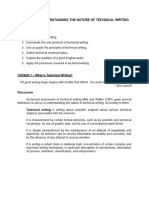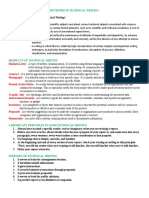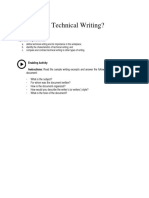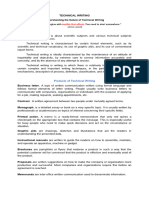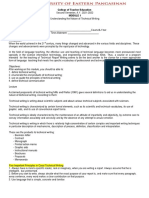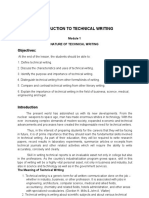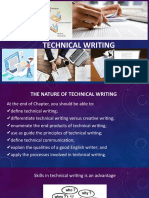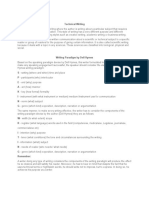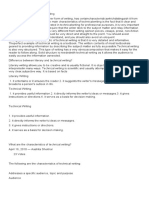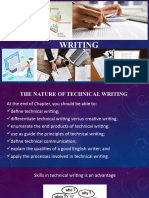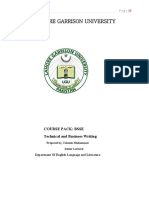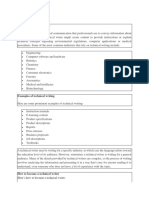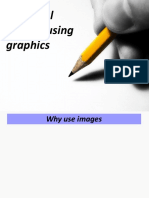0% found this document useful (0 votes)
8 views5 pagesTechnical Writing Notes
The document outlines five key principles of effective technical writing, emphasizing the importance of understanding the audience, clarity of purpose, and the use of simple language. It also discusses the various purposes and products of technical writing, such as business letters, contracts, and instructional manuals, while highlighting ethical considerations and legal aspects related to the field. Additionally, it covers the writing process, including stages of drafting and techniques for defining and classifying information.
Uploaded by
Shiela B.Copyright
© © All Rights Reserved
We take content rights seriously. If you suspect this is your content, claim it here.
Available Formats
Download as PDF, TXT or read online on Scribd
0% found this document useful (0 votes)
8 views5 pagesTechnical Writing Notes
The document outlines five key principles of effective technical writing, emphasizing the importance of understanding the audience, clarity of purpose, and the use of simple language. It also discusses the various purposes and products of technical writing, such as business letters, contracts, and instructional manuals, while highlighting ethical considerations and legal aspects related to the field. Additionally, it covers the writing process, including stages of drafting and techniques for defining and classifying information.
Uploaded by
Shiela B.Copyright
© © All Rights Reserved
We take content rights seriously. If you suspect this is your content, claim it here.
Available Formats
Download as PDF, TXT or read online on Scribd
/ 5



